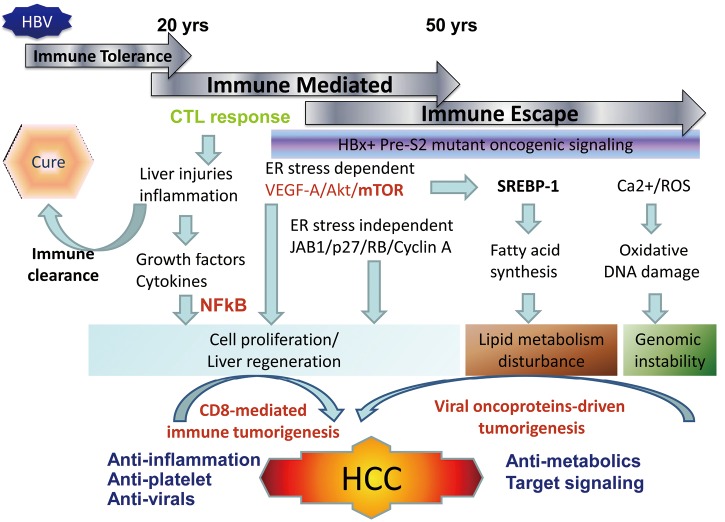Figure 1.
Natural course of chronic HBV infection and HBV tumorigenesis. Chronic HBV infection starts from the immune tolerance phase at the young childhood period. The leakage or loss of immune tolerance will lead to the immune-mediated CD8 cytotoxic phase at the adolescent age and result in chronic liver injuries, inflammations and liver regeneration. The sustained, untoward clinical consequences is the development of liver cirrhosis and tumorigenesis. In the late stage or low replicative phase of HBV infection, a series of oncogenic signal pathways that were activated by the mutated HBx and pre-S mutants which escape from immune attack and retined in the endoplasmic reticulum (ER) of ground glass hepatocytes. The oncoprotins-driven signals may lead to abnormal lipid metabolics and genomic instability, finally developing HCCs. Based on the pathogenesis of these two models and consequence of chronic HBV infection, different strategies of chemoprevention approaches to prevent HCC development or therapy can then be adopted

